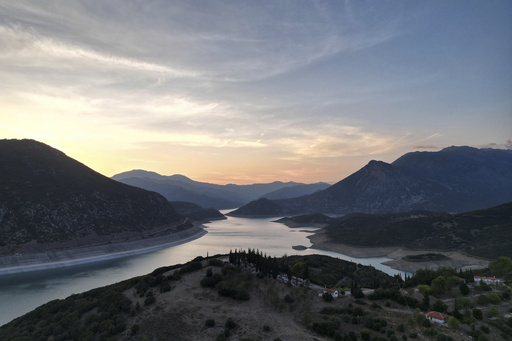In Lake Mornos, Greece, the remains of the sunken village of Kallio are resurfacing due to a historic drought caused by climate change. The village was submerged in the late 1970s to create the Lake Mornos reservoir, which supplies drinking water to Athens. With the reservoir at its lowest level in 16 years, concerns about water scarcity are escalating.
Authorities in Greece are urging citizens to conserve water as the drought persists. If significant rainfall does not occur soon, Athens could face a water shortage within the next four years. The deputy mayor of Doris municipality expressed worries about the situation, emphasizing the need for substantial and sustained rainfall to replenish water reserves.
According to the Athens water commission, water reserves for the city have significantly decreased over the past two years. Lake Mornos, in particular, has seen a sharp decline in water levels, with the current amount at its lowest since 2008. The impact of the drought extends beyond Athens, affecting various regions in Greece, leading to water cuts, depleted reservoirs, and drying wells.
To address the water crisis, the Greek government plans to implement measures such as reducing network leaks, utilizing water from alternative sources, and recycling wastewater for irrigation and industrial purposes. There is a growing realization of the need for collective efforts to tackle the water scarcity issue and adapt to the changing climate conditions.
As climate change continues to exacerbate drought risks, the reemergence of the sunken village serves as a poignant reminder of the sacrifices made for water resource management in the past. Former residents of Kallio, like 90-year-old Constantinos Gerodimos, reflect on the vibrant village they once called home, now visible as the reservoir levels recede, underscoring the urgent need for sustainable water management practices in the face of a changing climate.


